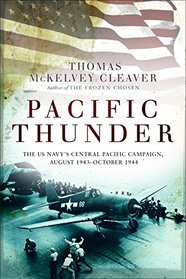Search -
Pacific Thunder: The US Navy's Central Pacific Campaign, August 1943-October 1944
Pacific Thunder The US Navy's Central Pacific Campaign August 1943October 1944
Author:
On 27 October 1942, four ?Long Lance? torpedoes fired by the Japanese destroyers Makigumo and Akigumo exploded in the hull of the aircraft carrier USS Hornet (CV-8). Minutes later, the ship that had launched the Doolitte Raid six months earlier slipped beneath the waves of the Coral Sea 100 miles northeast of the island of Guadalcanal and just n... more »
Author:
On 27 October 1942, four ?Long Lance? torpedoes fired by the Japanese destroyers Makigumo and Akigumo exploded in the hull of the aircraft carrier USS Hornet (CV-8). Minutes later, the ship that had launched the Doolitte Raid six months earlier slipped beneath the waves of the Coral Sea 100 miles northeast of the island of Guadalcanal and just n... more »
ISBN-13: 9781472821843
ISBN-10: 147282184X
Publication Date: 7/18/2017
Pages: 320
Rating: ?
ISBN-10: 147282184X
Publication Date: 7/18/2017
Pages: 320
Rating: ?
0 stars, based on 0 rating
Genres:
- History >> Americas >> United States
- History >> Military >> Naval
- History >> Military >> World War II
- History >> World




